What are the characteristics of Sidamo coffee beans? Sidamo coffee taste flavor introduction
Ethiopia is the birthplace of coffee, there is a wide variety of coffee, and the coffee flavor of each coffee producing area is obviously different. Ethiopia is the sixth largest coffee producer in the world. It is reported that 100 million people were directly or indirectly engaged in the coffee industry worldwide in 2018, and Ethiopian coffee workers accounted for 20% of the 100 million people. In 2017, the country produced about 470000 tons of raw coffee beans, of which about 160000 tons were exported, which means that Ethiopia exports less than half of its total coffee production and consumes the rest domestically.
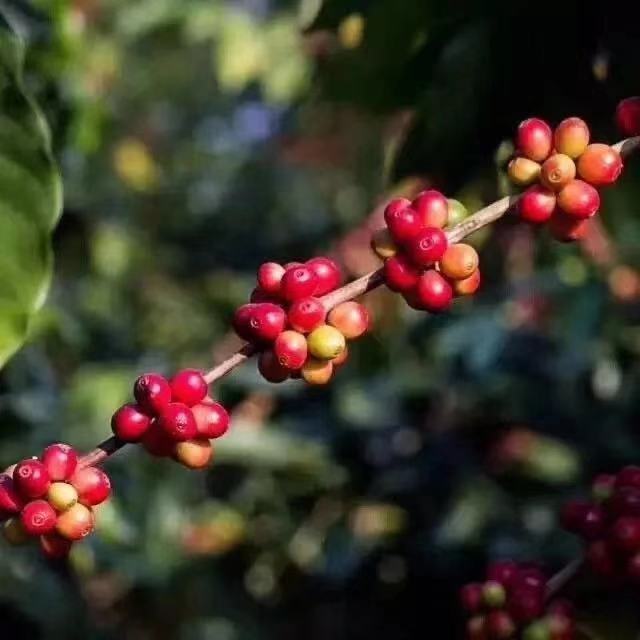
Coffee has been integrated into the social fabric of Ethiopia for hundreds of years. There are mainly eight major coffee producing areas in Ethiopia: Lekempti, Limu, Illubabor, Djimmah, Harar, Teppi/Bebeka, Sidamo and Yirgacheffe.
When it comes to the Yejashafi producing area, you may think of Yejashafi coffee, while when it comes to Sidamo, it is Sakui coffee. The rations and beans in front of the street are very popular. Yega Xuefei Coffee and individual Coffee Sakuran 5.0 are very popular!
Sidamo
Sidamo is a famous boutique coffee producing area in Ethiopia. The good flavor of coffee is closely related to its growing environment. Sidamo grows in the southernmost Ethiopian plateau between 4600 and 7200 feet above sea level (Sidamo province), bordering Kenya, southeast of Gemma, just south of the capital, with an annual production of about 225000 bags / 60kg. The biggest advantage of the area is that the soil fertility is maintained through the circulation of organic matter, using the withered leaves of the surrounding trees or the residual roots of the plants as fertilizer. Therefore, the coffee produced in cities and towns has obvious differences and characteristics.
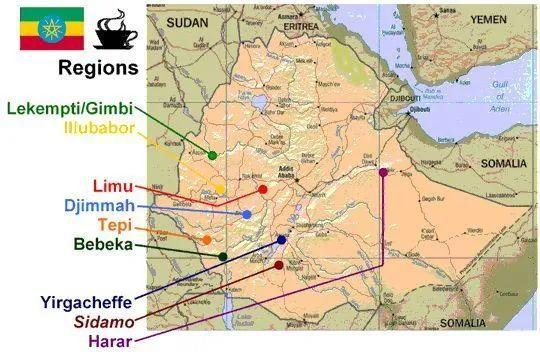
The most famous coffee growing areas in Sidamo are GUji and West Arsi.
Sidamo Coffee beans are grayish, thick in some places and small in others, with soft and strong acidity, mellow and sweet and spicy. It is one of the courtyard coffees in the highlands of southern Ethiopia. What Qianjie thinks is different from ordinary African coffee is that Sidamo has clear acidity, smooth taste and delicate floral smell.
Guji producing area
When it comes to the Guji producing area, you will definitely think of Sakuran coffee. The Guji producing area, which once belonged to the Sidamo producing area, has been independent into a new producing area by the Ethiopian Commodity Exchange (ECX) in 2010. The Guji producing area, located in the southeast of Yejasuffi, is an area with complex topographical changes such as towering mountains, valleys and plains. The geology of this area belongs to the nutrient-rich black soil (Vertisol), the depth of the soil is nearly two meters, and the average elevation is more than 1800 meters. The significant temperature difference between day and night created by geographical characteristics makes the local area have various local conditions for producing high-quality coffee.
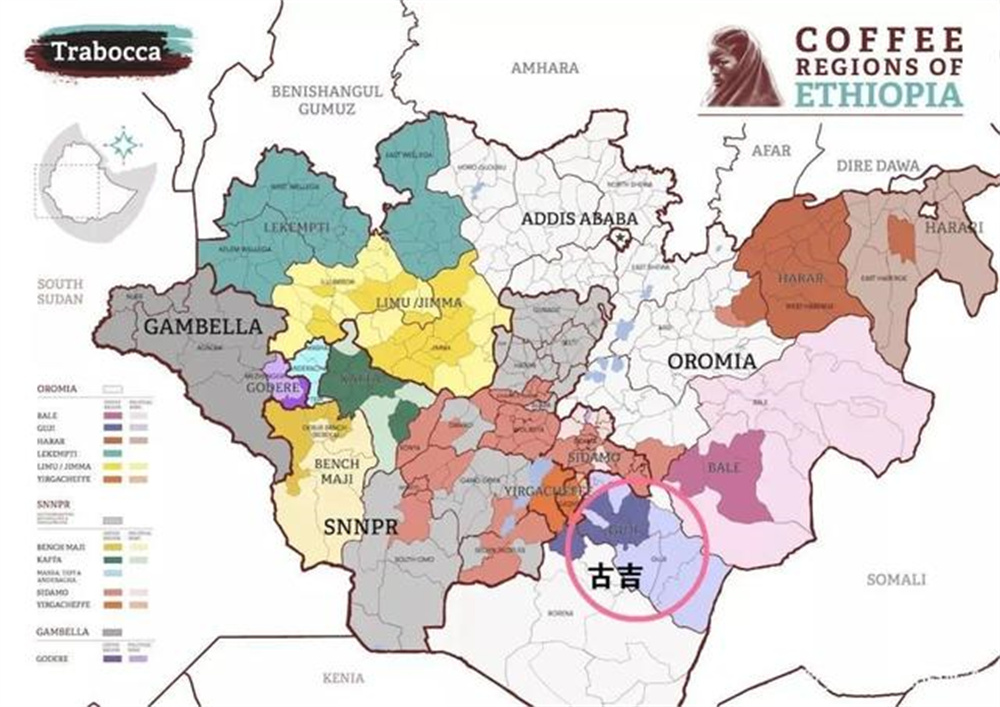
Sakuran, which comes from Hambella, is located in Guji, Ethiopia's largest coffee producing area, and the administration belongs to the state of Oromia. The west of Humbera faces the mountains of Yega Fichier. The two producing areas are separated by a highland with an elevation of 3200 meters and a width of about 30 kilometers, and are bordered by Shakiso, Uraja and Kolasha in Guji in the east and south, respectively. It is the highest coffee producing area in Ethiopia. Qianjie believes that it is precisely with such a growing environment that the flavor of Sakui coffee is so good!
At present, there are nearly 20 processing plants of various sizes in Humbela production area. In 2017, Ethiopia's DW Raw Bean Company sent their coffee beans to the TOH (the Taste Of Harvest) Raw Bean Competition hosted by the African Coffee Association, and a sun batch from the "Buku Abel" processing plant won the TOH Ethiopia championship with its strong strawberry and cream aroma. At that time, this batch of raw beans was introduced to China by Hongshun, a raw bean trader in Beijing. in the same year, Li Jianfei used this bean to win the runner-up in China in the 17-year World Cooking Competition. This Ethiopian bean stands out among the many rosy summer beans, so it is named "Sakuran". Rosa Geisha means geisha in Japanese, and Hua Kui means the head of a geisha to show the excellence of this bean. )
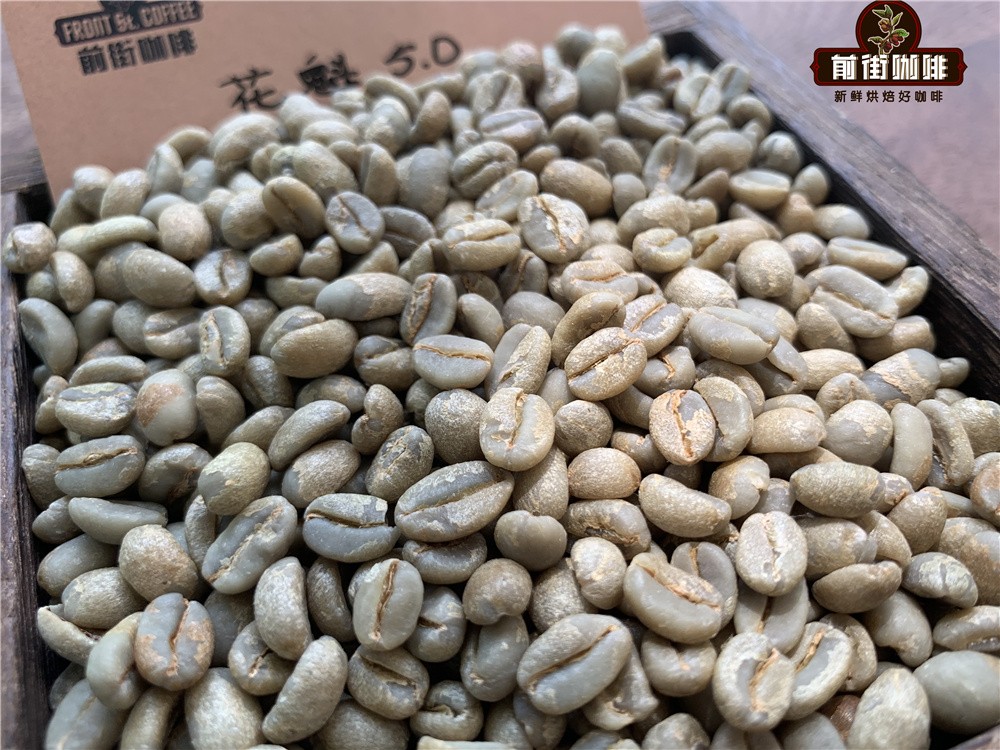
Coffee is also a crop, of course, affected by the climate, the flavor will be different from year to year, and in order to distinguish these, it will be named: Sakui 2.0, Sakui 3.0, Sakui 3.1, Sakui 4.0, Sakui 5.0 and Sakui 6.0.
Arsi coffee producing area
Arsi is another boutique coffee producing area in Sidamo. Arsi (West Arsi) is located between the famous Yirgacheffe coffee growing area and Haller Hararge, at an altitude of 1900-2200m, in the western part of the Sidamo region, named after a branch of the Oromo people who have lived here for a long time. Arsi consists of three woredas, namely, Arsi (Arsi), Bale (Bale) and East Shewa (Ethiopia's third-tier administrative region). About 88.52% of the population of West Alsi is Oromo, which is very important in the history of coffee because they are the first tribes in human history to drink coffee, and half of the coffee produced in Ethiopia comes from the region.
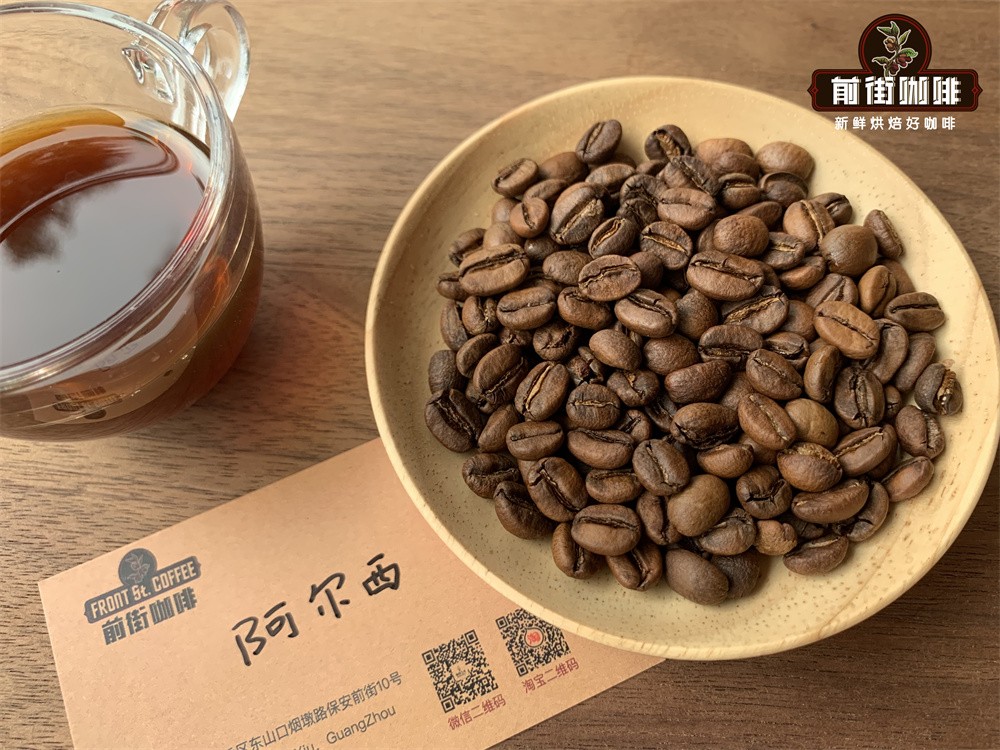
Coffee cultivation in Arsi is based on a smallholder model, and the average smallholder farm is small, about 2-3 hectares, but even so, they tend to be slightly larger than the usual 1.5-2 hectares in most parts of Ethiopia. Although the current coffee planting technology is still in the stage of development, compared with other producing areas, the coffee planting technology in Arsi is developing very fast. Coffee farmers do not need to hire temporary or full-time workers, but choose coffee with the help of their families. This allows them to better control the quality of coffee, and processing stations usually pay extra for ripe red cherries, greatly increasing the enthusiasm of coffee farmers.
Sun treatment of Sidamo Coffee beans
Most of the coffee beans in Yega Xuefei area are washed with water, while most of the coffee beans in Sidamo area are mainly sun-treated. Qianjie believes that the sun treatment gives coffee beans in the Sidamo area a strong fruity aroma and a smooth taste.
During the coffee harvest season, farmers in the Sidamo area only picked ripe red fruits and put them in baskets one by one. The picked coffee fruit has uniform size, similar maturity and no other impurities. In the process of treatment, it is necessary to manually screen defective coffee beans and immature or overripe coffee fruits. Then lay the coffee red fruit on a high wooden frame or whole scaffolding to make the sun, so as to avoid the risk of beans smelling on the ground.
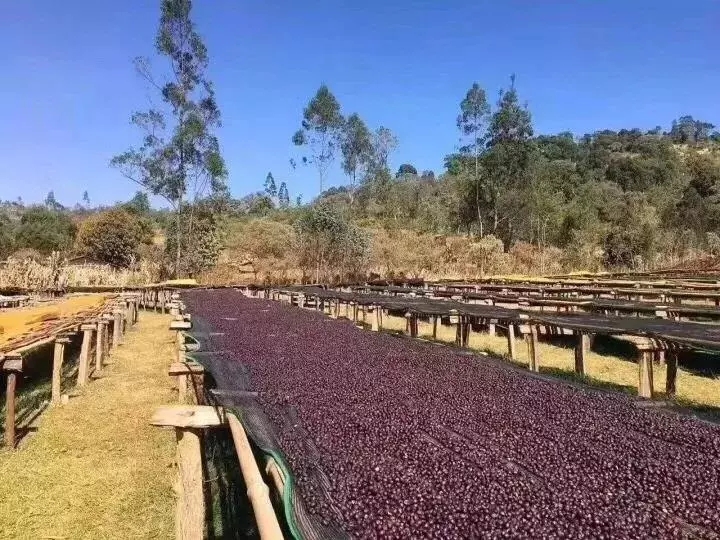
In the process of exposure, it will constantly turn to ensure that the coffee beans can be evenly exposed to water; every three to five days, farmers will manually screen out the defective and moldy beans. Wait for the peel to dry and harden, and then use a sheller to remove the hard peel. After obtaining the raw coffee beans, the farmer will do one last screening in pursuit of the perfect taste. Therefore, this suntan sidamole can reach the highest level of G1.
Qianjie cooking suggestion:
How can such excellent coffee beans be flushed into a delicious flavor? Qianjie believes that the freshness of coffee beans is a very important link, the freshness of coffee beans can maximize the rich flavor of coffee. The coffee beans shipped in Qianjie are all roasted within 5 days, because Qianjie is well aware that the freshness of coffee beans has a great impact on the flavor. The purpose of Qianjie roasting is "freshly roasted coffee", so that every guest who places an order is the freshest coffee when he receives it. The bean cultivation period of coffee is about 4-7 days, so when the guest gets it, it is the time when the flavor is the best.

Of course, there are some customers who need help grinding powder in front of the street, which doesn't matter, but Qianjie has to warn: if the coffee beans are ground ahead of time, there is no need to raise the beans, because in the process of transportation, the pressure caused by carbon dioxide in the package can also make the coffee flavor mellow, so when you receive the coffee powder, you can immediately make a cup of coffee to drink. But the coffee powder needs to be brewed in time, because the coffee powder oxidizes more quickly after contact with the air, that is to say, the flavor of the coffee will dissipate more quickly, and the flavor of the coffee is not so good. Therefore, Qianjie suggests buying whole beans, grinding and flushing now, so that we can better taste the flavor of coffee.
Parameters for brewing Huakui coffee in Qianjie:

V60 filter cup, water temperature 90 ℃, ratio of water to powder 1:15, powder quantity 15g, grindability (pass rate of China No. 20 standard screen 80%)
The use of segmented extraction, with twice the amount of coffee powder water for steaming, that is, 30 grams of water for 30 seconds, and the reason for the need for steaming process is to make coffee powder can discharge the internal carbon dioxide gas, so that the latter stage of the extraction is better stable. When the small water is injected around the circle to 125 grams, the injection will be stopped until 225 grams, then the filter cup will be removed after the dripping of the filter cup, and the extraction time will be 2 minutes 39 grams. Next, pick up and shake the whole cup of coffee, then pour it into the cup and taste it.
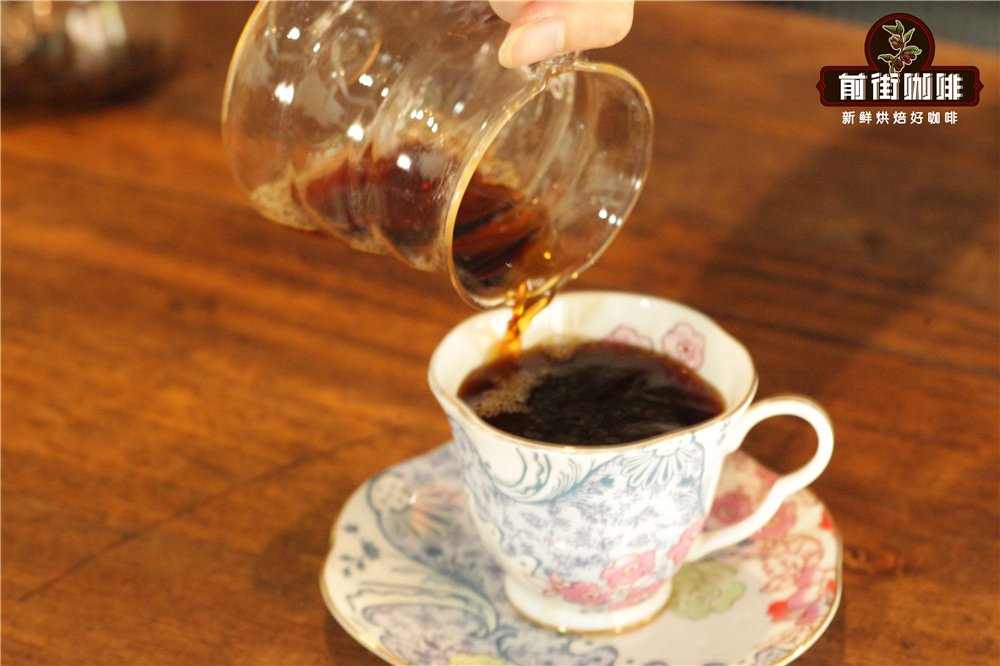
[sun Sidamo Sakura 5.0 Coffee flavor]: floral aroma, sweet and sour aromas of berries, citrus and plums, mango juice, honey and sweet aftertaste of black tea.
[sun Arsi Coffee Flavor]: it tastes like berry juice at high temperature, with hints of plums, nectarines, mangoes and honey.
Professional coffee knowledge exchange more coffee bean information please follow the coffee workshop (Wechat official account cafe_style)
For more boutique coffee beans, please add private Qianjie coffee on Wechat. WeChat account: qjcoffeex
Important Notice :
前街咖啡 FrontStreet Coffee has moved to new addredd:
FrontStreet Coffee Address: 315,Donghua East Road,GuangZhou
Tel:020 38364473
- Prev

How expensive is Blue Mountain Coffee? do you know how much Blue Mountain Coffee beans cost per pound?
Coffee workshop (Wechat official account cafe_style) Front Street Coffee-Blue Mountain Coffee introduction Blue Mountain Coffee is one of the varieties often seen in cafes, but many domestic cafes marked the Blue Mountain flavor, in fact, such coffee beans just taste like Jamaica Blue Mountain Coffee, but not. Jamaican Blue Mountain Coffee is mainly produced by
- Next
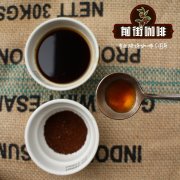
2022 Huakui 6.0 Coffee Bean Flavor Taste Description
Professional coffee knowledge exchange More coffee bean information Please pay attention to coffee workshop (Weixin Official Accounts cafe_style) Qianjie coffee-West Dharma Flower Kui Coffee Introduction In 2017, DW Raw Bean Company in Ethiopia sent their coffee beans to the competition TOH (theTa) sponsored by African Coffee Association
Related
- Beginners will see the "Coffee pull flower" guide!
- What is the difference between ice blog purified milk and ordinary milk coffee?
- Why is the Philippines the largest producer of crops in Liberia?
- For coffee extraction, should the fine powder be retained?
- How does extracted espresso fill pressed powder? How much strength does it take to press the powder?
- How to make jasmine cold extract coffee? Is the jasmine + latte good?
- Will this little toy really make the coffee taste better? How does Lily Drip affect coffee extraction?
- Will the action of slapping the filter cup also affect coffee extraction?
- What's the difference between powder-to-water ratio and powder-to-liquid ratio?
- What is the Ethiopian local species? What does it have to do with Heirloom native species?

